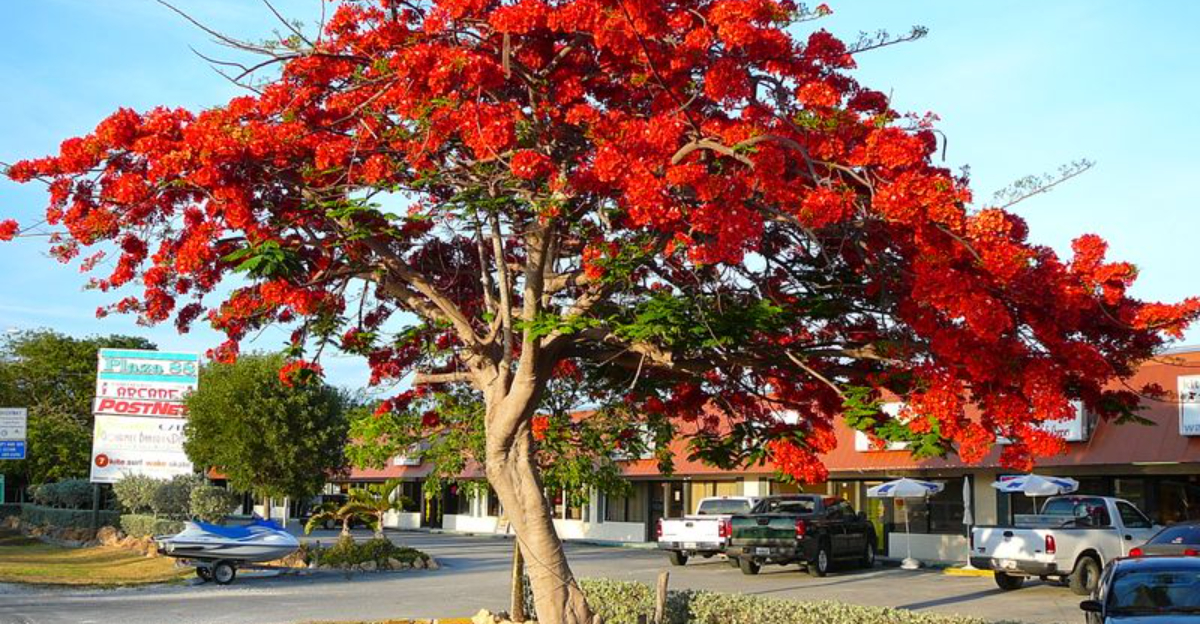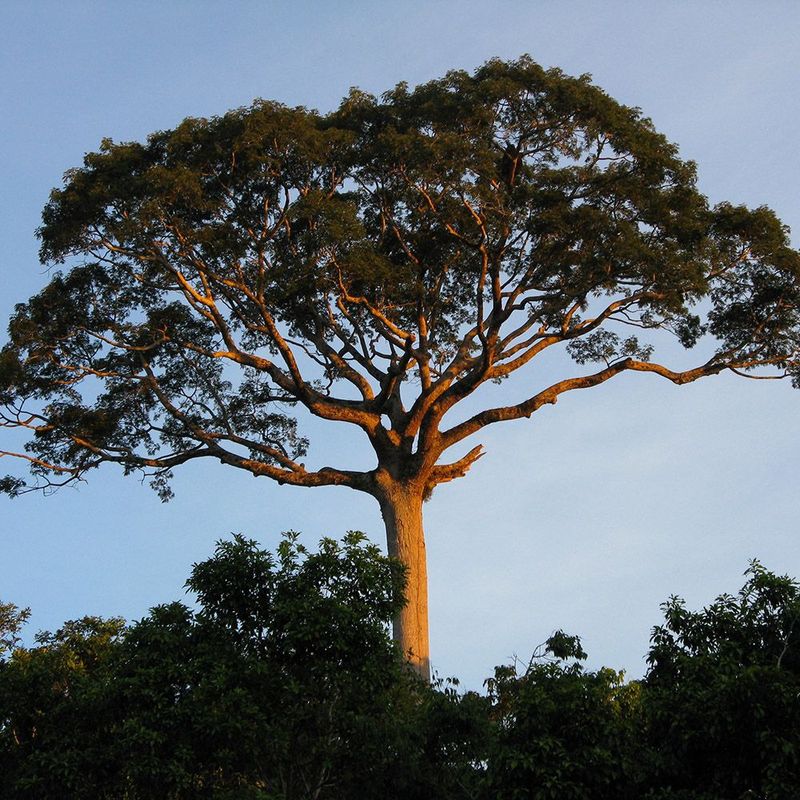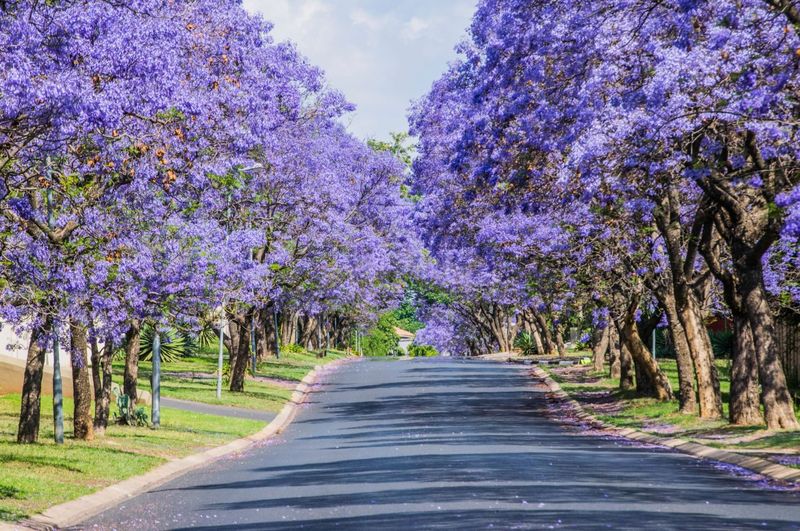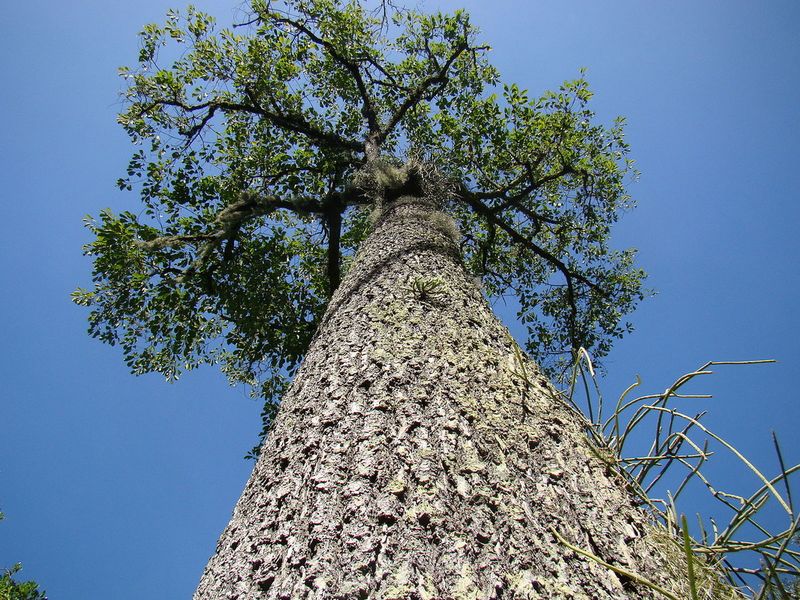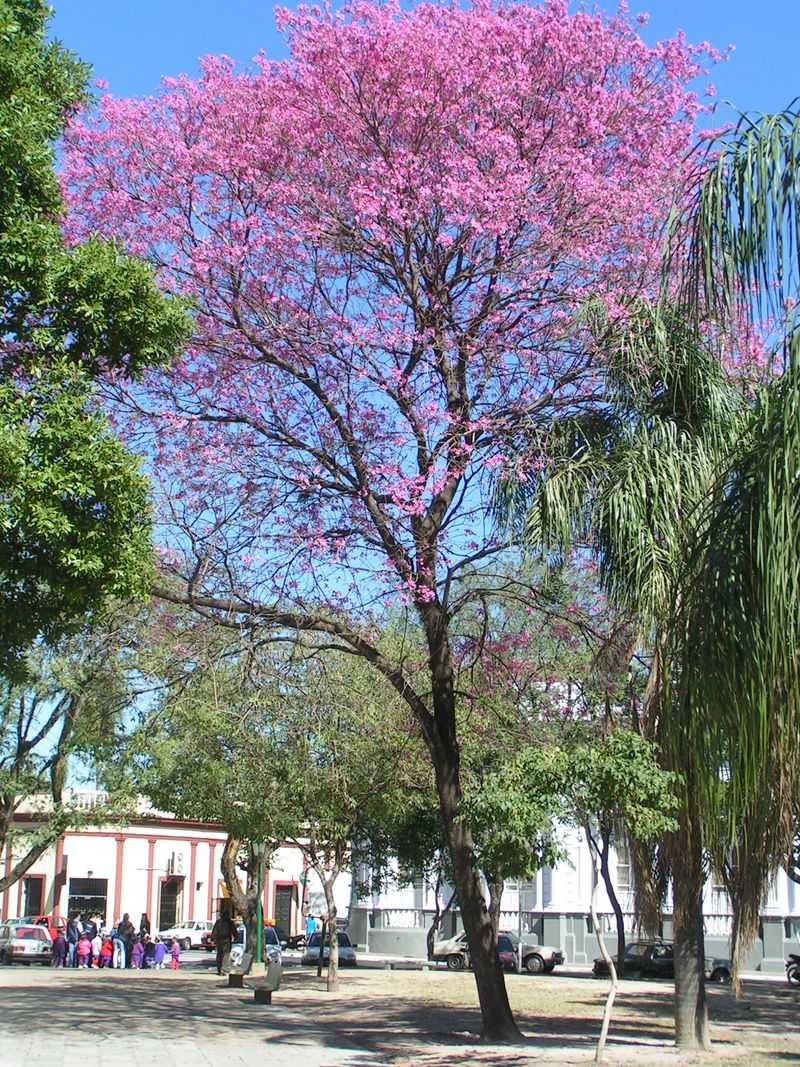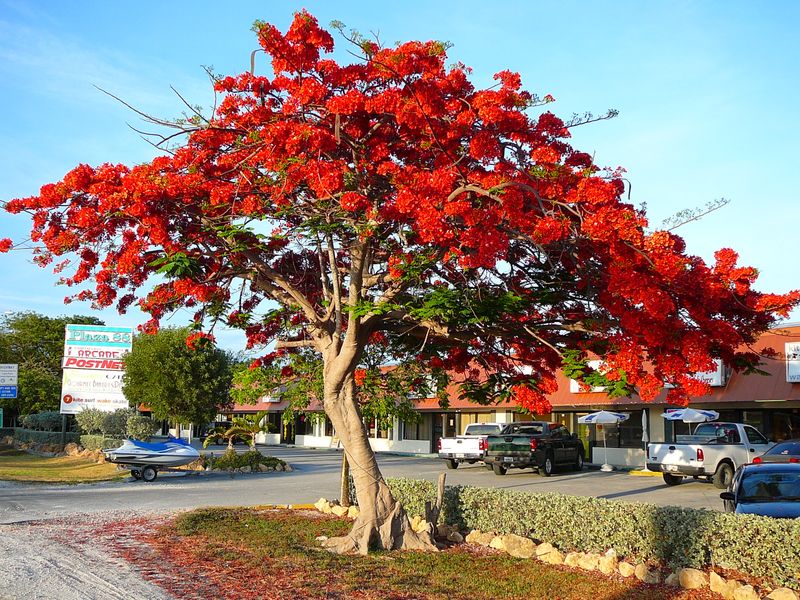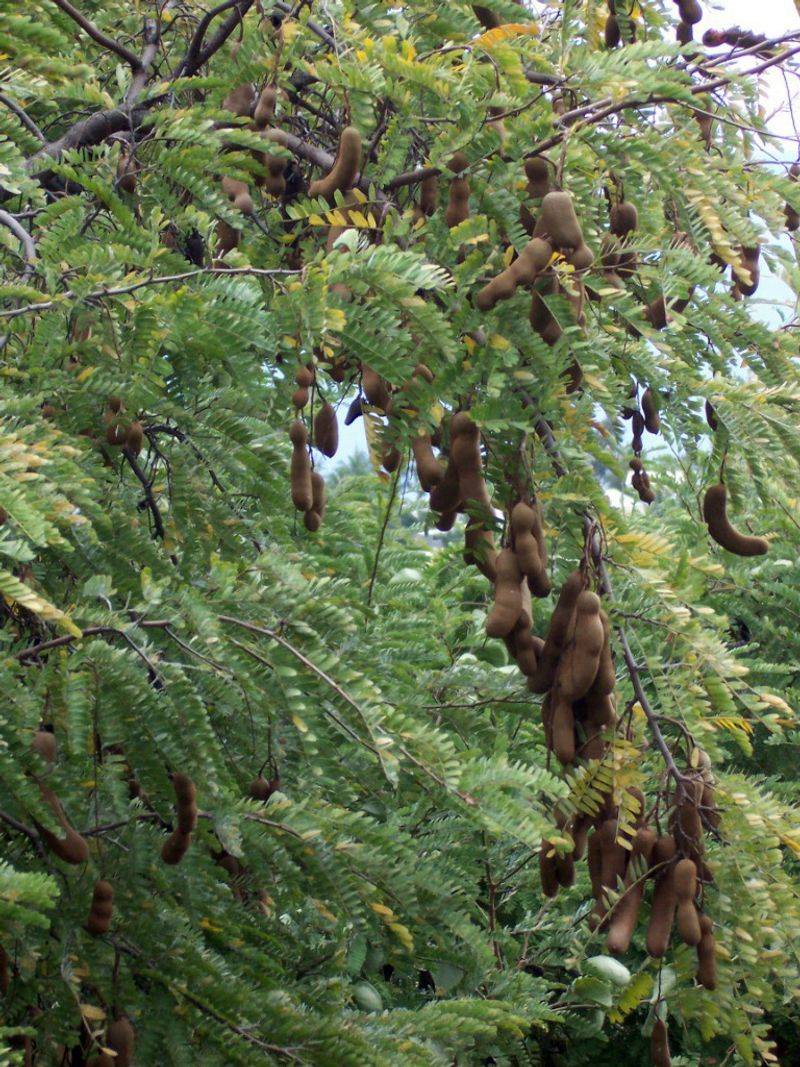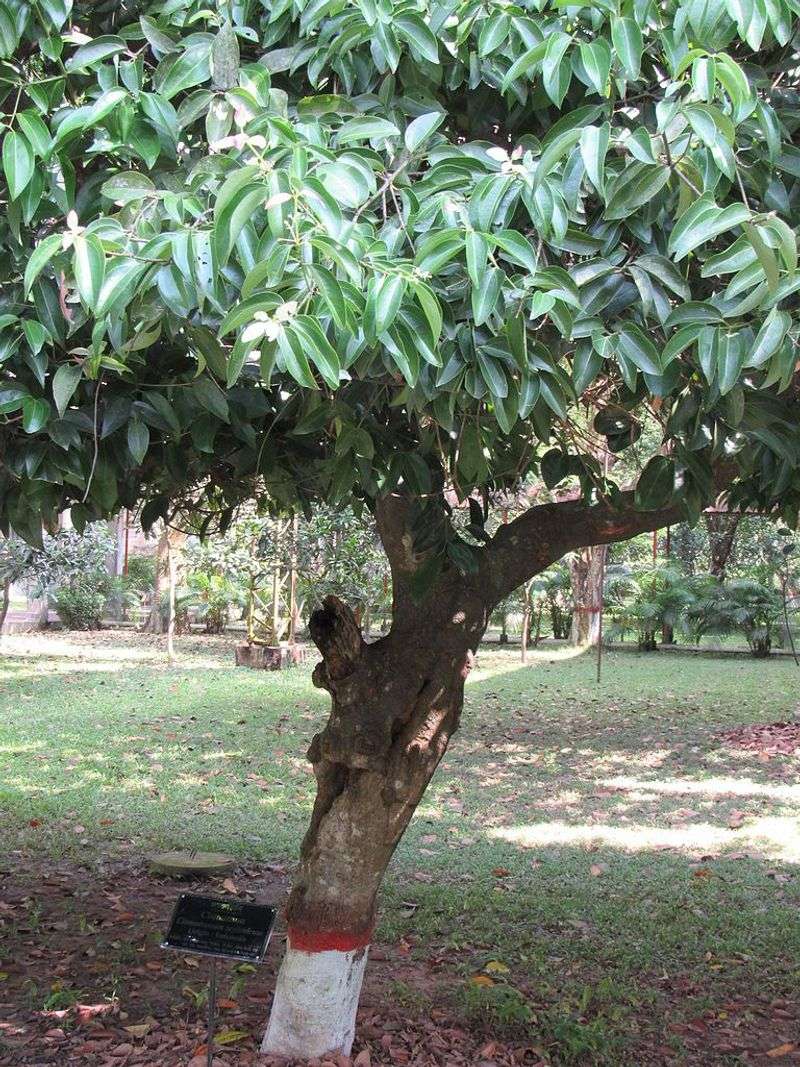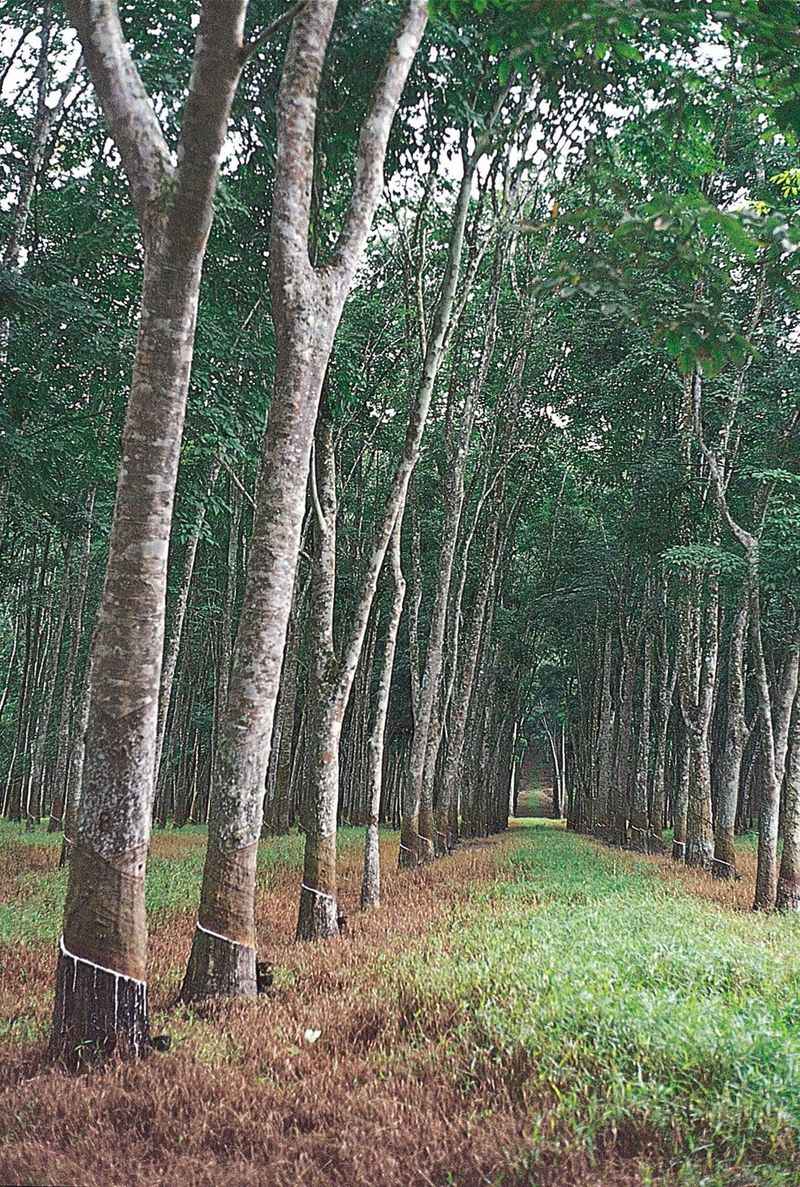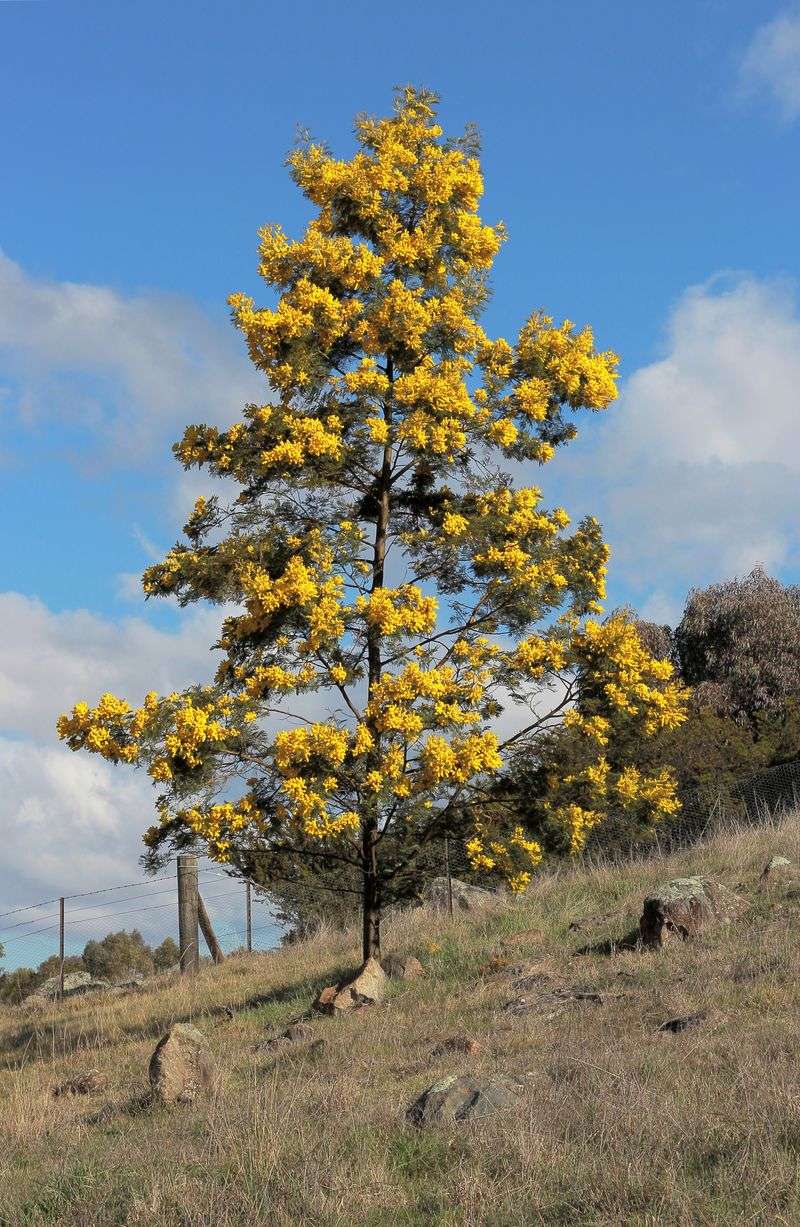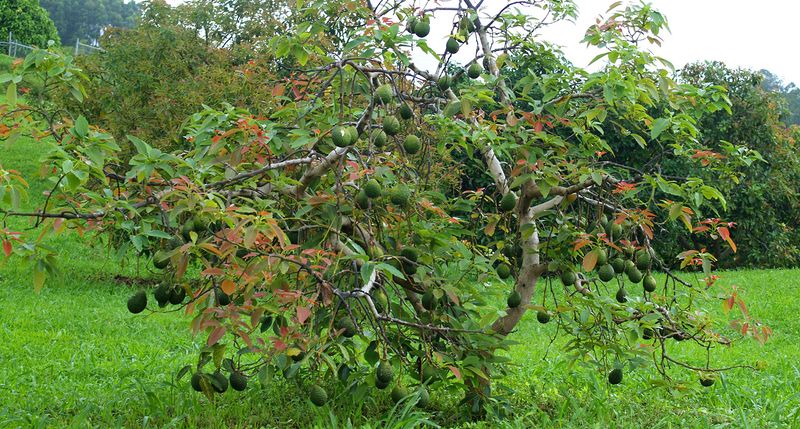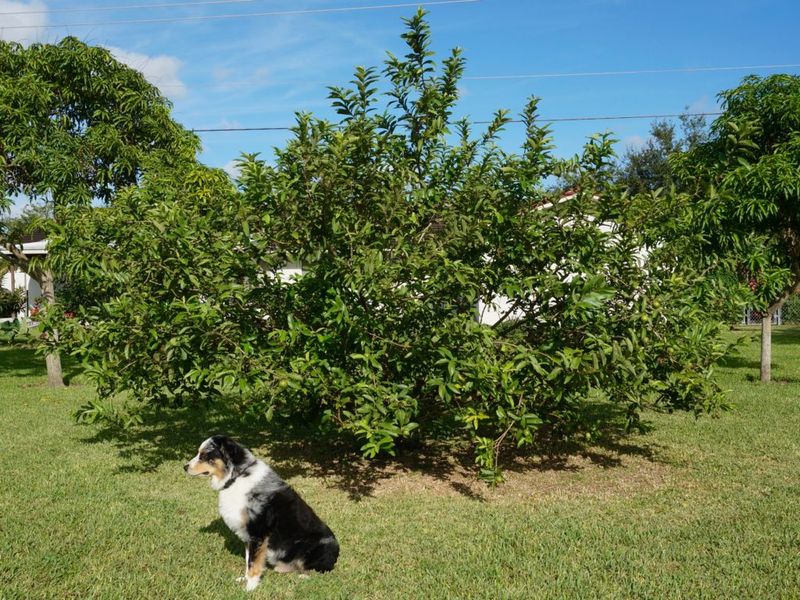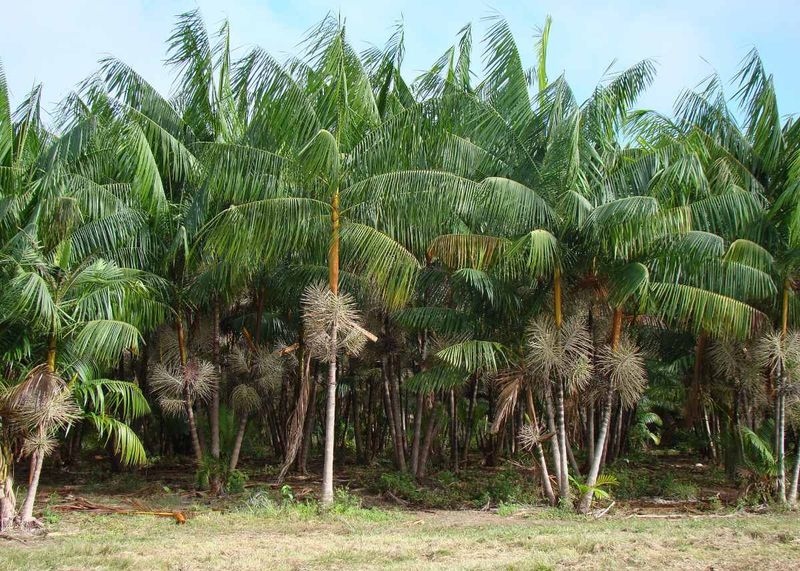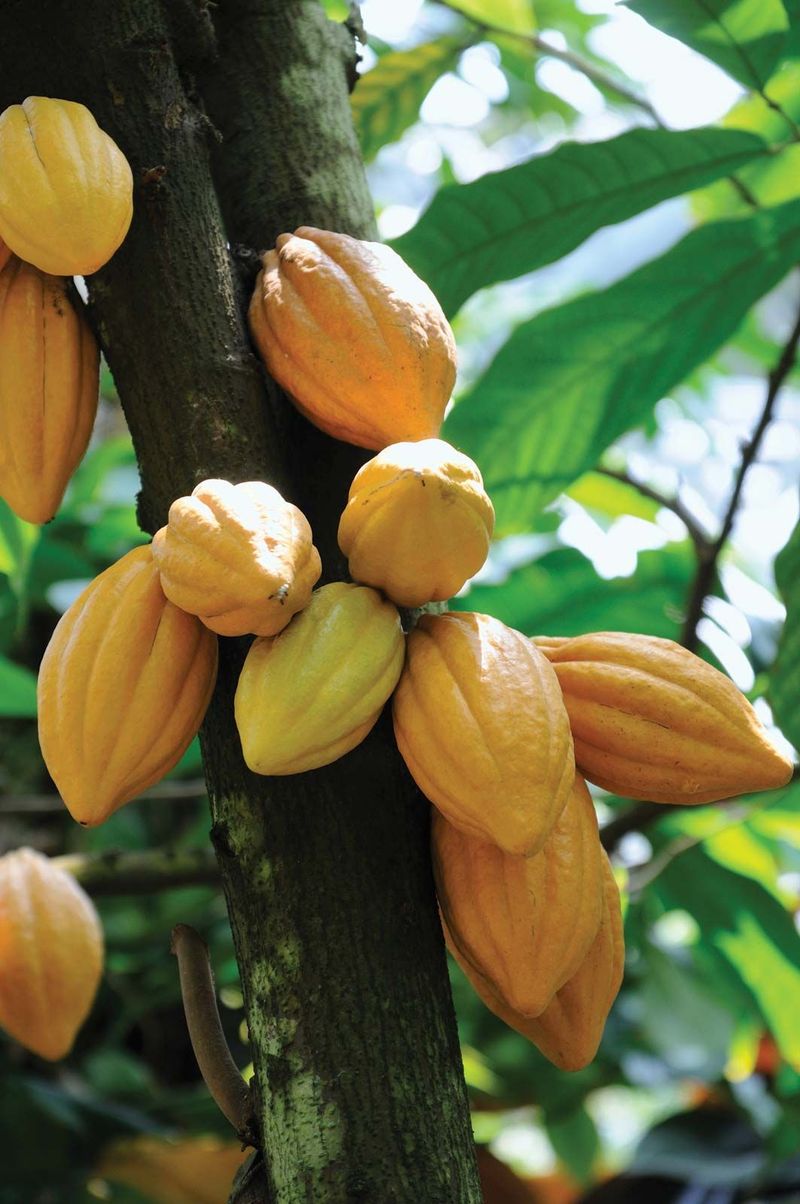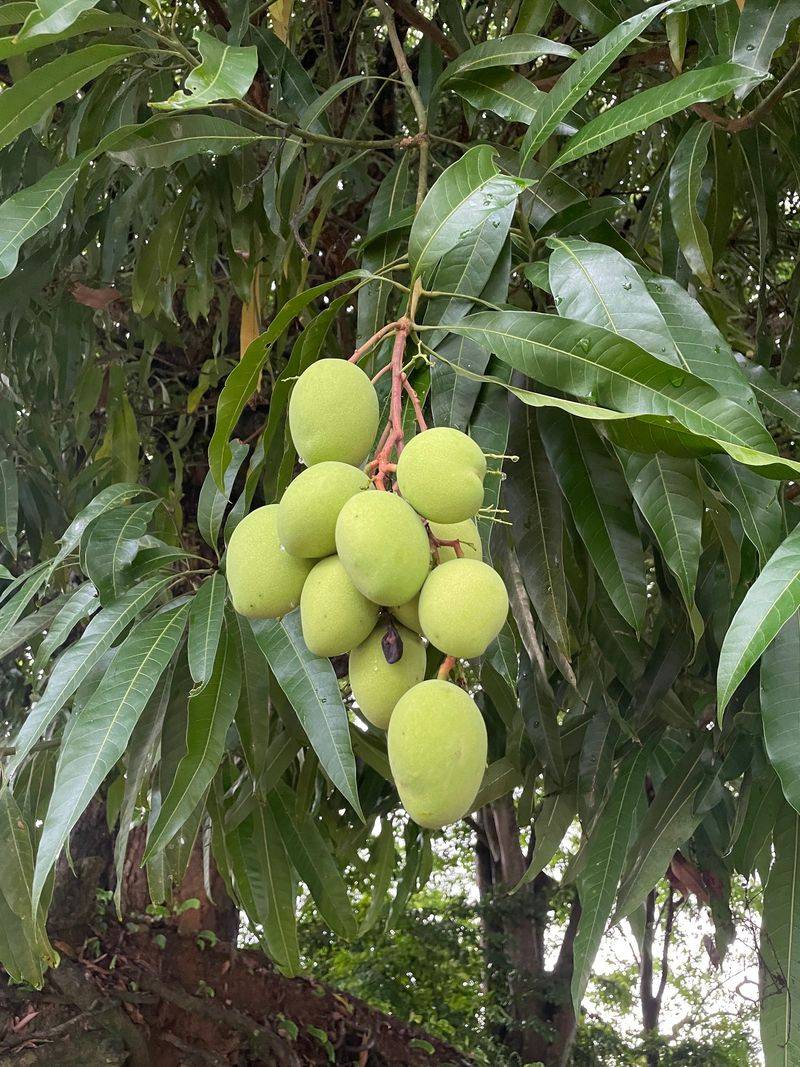Exploring the rich diversity of trees across South America reveals an enchanting world of flora that shapes landscapes and cultures alike.
From dense rainforests to arid dry forests, these trees offer a glimpse into the ecological tapestry of the continent.
Below, we dive into fifteen of the most remarkable trees that thrive in South America’s varied environments, each with its unique charm and contributions.
1. Ceiba Tree (Ceiba pentandra)
The Ceiba Tree, or Kapok tree, is an impressive giant that holds spiritual significance in many cultures across South America. Towering high, it serves as a beacon of biodiversity, offering habitat to countless wildlife species. Birds often nest in its branches, while smaller mammals find refuge in its vast trunk.
This tree’s majestic presence in rainforests contributes to the ecosystem’s health by providing shelter and resources to a variety of fauna. Its seeds, encased in fluffy fibers, are dispersed by the wind, aiding in its propagation.
Admired for its resilience, the Ceiba Tree continues to withstand environmental challenges.
2. Jacaranda (Jacaranda mimosifolia)
Jacaranda trees, famous for their exquisite purple blossoms, grace South American landscapes with their vibrant colors. Originating from subtropical regions, these fast-growing trees transform streets and gardens into spectacles of beauty. The blooms attract pollinators, adding to their ecological value.
With a sturdy structure, Jacarandas provide excellent shade, making them a popular choice for urban planting. Their deciduous nature allows sunlight to warm spaces during colder months, enhancing their appeal.
Beyond aesthetics, Jacarandas symbolize wisdom and rebirth, often celebrated in local festivals and cultural traditions, enriching the regional heritage.
3. Palo Santo (Bursera graveolens)
Palo Santo, revered for its aromatic wood, thrives in the dry forests of South America. Its name, meaning “holy wood,” reflects its use in spiritual and medicinal practices. Burning its wood releases a soothing fragrance believed to cleanse spaces and promote relaxation.
This small tree’s resilience to arid conditions makes it a vital component of dry forest ecosystems. Its leaves provide food for indigenous wildlife, while its roots stabilize soil, preventing erosion.
Cultivating Palo Santo helps sustain local economies, where communities harvest its wood sustainably, ensuring its mystical presence endures for future generations.
4. Brazil Nut Tree (Bertholletia excelsa)
The Brazil Nut Tree is a cornerstone of the Amazon rainforest, renowned for its nutritional nuts and ecological importance. Towering above the canopy, it sustains a diverse range of wildlife, from parrots to agoutis, which play roles in seed dispersal.
The nuts, encased in hard shells, are a valuable food source for both animals and humans, harvested sustainably by local communities. This tree’s presence promotes biodiversity, as it supports an array of species within its vicinity.
Beyond its ecological role, the Brazil Nut Tree contributes economically, with its nuts being a vital export product worldwide.
5. Lapacho (Handroanthus impetiginosus)
Lapacho trees, known for their striking pink blossoms, transform landscapes into vibrant displays of color. Native to South America, these trees flourish in diverse climates, from forests to urban areas. Their flowers not only beautify surroundings but also attract pollinators, supporting biodiversity.
The tree’s durable wood is prized for construction, making it economically significant. Its bark, used in traditional medicine, highlights its cultural importance.
By planting Lapacho trees, communities enhance ecological resilience, combatting soil erosion and providing habitats. This species’ enchanting beauty and utility make it a cherished addition to South American flora.
6. Flamboyant Tree (Delonix regia)
The Flamboyant Tree, or Royal Poinciana, dazzles with its fiery red-orange blooms, creating a tropical paradise wherever it grows. Its broad canopy offers ample shade, making it a beloved choice for parks and public spaces in warm climates.
Besides its aesthetic appeal, the tree supports various wildlife, providing nectar for birds and bees. Its leaves, reminiscent of ferns, add to its exotic charm.
As a symbol of resilience, planting Flamboyant Trees enhances urban green spaces, promoting environmental well-being. Their vibrant presence in South America’s landscapes celebrates nature’s brilliant palette.
7. Tamarind (Tamarindus indica)
The Tamarind Tree, known for its tangy fruit, thrives in South America’s warm, dry climates. Its sprawling branches create inviting shade, making it an ideal tree for hot environments. The fruit, encased in brown pods, is a culinary delight, used in various dishes and beverages.
Tamarind trees contribute to the ecosystem by enriching soil fertility through nitrogen fixation. Their robust nature allows them to withstand drought, ensuring their survival in challenging conditions.
Cultivating Tamarind Trees not only enhances food diversity but also provides economic opportunities for local farmers through fruit sales and value-added products.
8. Cinnamon Tree (Cinnamomum verum)
The Cinnamon Tree, treasured for its fragrant bark, thrives in South America’s humid climates, offering both economic and culinary value. Its aromatic bark is harvested and processed into the spice beloved worldwide, adding warm flavors to various cuisines.
Beyond its culinary uses, the tree plays a role in traditional medicine and cultural rituals. Its evergreen leaves and small flowers create a lush, green presence in gardens and plantations.
Growing Cinnamon Trees supports local economies by providing livelihoods through sustainable harvesting practices, ensuring this spice’s legacy continues to enrich human palates globally.
9. Rubber Tree (Hevea brasiliensis)
Once the backbone of the rubber industry, the Rubber Tree remains a vital part of South American flora. Indigenous to the Amazon rainforest, it produces latex, a key component in rubber production, essential for numerous industries worldwide.
These trees thrive in tropical conditions, contributing to the biodiversity of rainforests. Their presence supports local wildlife, providing shelter and food sources.
Sustainable tapping practices ensure the Rubber Tree’s longevity, balancing ecological needs with economic benefits. Engaging local communities in these practices fosters conservation efforts, preserving both natural and cultural heritage linked to this iconic tree.
10. Acacia (Acacia mangium)
Acacia Trees are a versatile species known for their soil-stabilizing abilities and resilience in dry environments. Their spreading branches create a canopy of shade, beneficial for both wildlife and humans seeking respite from the sun.
The tree’s small, clustered yellow flowers attract pollinators, supporting biodiversity. Its robust root system prevents soil erosion, crucial for maintaining ecosystem balance in arid regions.
By planting Acacia Trees, communities can combat desertification and improve land productivity. Their fast growth and adaptability make them a strategic choice for ecological restoration projects across South America.
11. Avocado Tree (Persea americana)
The Avocado Tree is cherished for its nutritious fruits, known as ‘green gold.’ Thriving in South America’s mild to warm climates, these trees are a staple in many gardens and orchards. Their fruits are valued for their creamy texture and health benefits, including healthy fats and vitamins.
Avocado Trees support biodiversity, providing habitat and food for various species. Their dense foliage offers excellent shade, enhancing garden aesthetics and comfort.
Growing Avocado Trees presents economic opportunities for local farmers, with avocados being a sought-after export product, celebrated globally for their culinary versatility.
12. Guava Tree (Psidium guajava)
The Guava Tree is a hardy species, producing sweet, vitamin-rich fruits that delight the taste buds. Found throughout South America, these fast-growing trees thrive in various climates, from tropical to subtropical regions. Their fruits are rich in Vitamin C, making them a nutritious addition to diets.
Guava Trees provide habitat and food for wildlife, contributing to ecosystem diversity. Their robust nature allows them to withstand environmental challenges, ensuring a steady fruit supply.
Cultivating Guava Trees is advantageous for local communities, supporting agriculture through fruit sales and processing into juices, jams, and other products.
13. Açaí Palm (Euterpe oleracea)
Açaí Palms are iconic in the Amazon, celebrated for their nutritious berries. These slender palms flourish in floodplain forests, contributing to the rich biodiversity of their habitat. Their berries, packed with antioxidants, are a vital food source for both locals and wildlife.
Harvesting Açaí berries provides economic benefits to Amazonian communities, who process them into juices and bowls enjoyed worldwide. Sustainable cultivation practices ensure these palms continue to thrive.
In addition to their nutritional value, Açaí Palms play a role in soil stabilization and water regulation, supporting the delicate balance of the Amazon ecosystem.
14. Cacao Tree (Theobroma cacao)
The Cacao Tree, essential for chocolate production, thrives in South America’s warm, humid regions. Its cocoa pods, containing beans, are harvested and processed into chocolate, a beloved treat worldwide.
These trees prefer the shaded understory of rainforests, contributing to biodiversity by providing habitat for various species. Their presence supports ecological balance, as they coexist with other flora.
Cultivating Cacao Trees offers economic opportunities for local farmers, with chocolate being a high-demand product globally. Sustainable farming practices ensure the continued health of both the trees and the surrounding environment.
15. Mango Tree (Mangifera indica)
Mango Trees, adored for their sweet, juicy fruits, thrive in South America’s tropical climates. These trees are an integral part of gardens and orchards, offering shade and delicious mangoes during fruiting seasons.
Their large canopy supports wildlife, providing habitats and food sources. The fruits’ vibrant colors attract birds and animals, facilitating seed dispersal and ecosystem vitality.
Growing Mango Trees presents economic opportunities, with their fruits being a popular export product. Ensuring that these trees are cultivated sustainably helps maintain their presence in South American landscapes, enriching both the environment and local economies.
